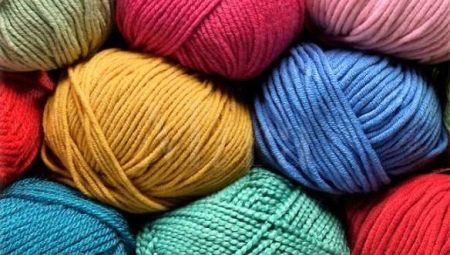Features of microfiber yarn and the scope of its use

Many crochet or knitting lovers have seen microfiber yarn in stores at least once. But the majority pass by in disbelief, choosing more natural and familiar materials. However, microfiber is a material that not only is not inferior in quality to the wool familiar to everyone, but in some aspects even surpasses it.


What it is?
Microfiber is a completely artificial material that consists of two layers. The core of the thread is polyester, it makes up more than half of the thread, about 80%. The remaining 20% is polyamide. It wraps the core in a dense layer, but due to its structure, it leaves small pores (fibers) that perfectly absorb any liquid. Hence the name of the material: microfiber - small pores. Thanks to this composition, the material is light and pliable, while maintaining wear resistance. It is microfiber that is considered one of the most wear-resistant materials.

Thanks to the smoothness of the threads, knitting from them is easy and convenient. The threads fit well on top of each other and practically do not get confused, and microfiber products are light and voluminous. The fibers of microfiber filaments are much thinner than usual materials such as wool or cotton, which makes the filament denser, which means that it provides greater wear resistance of finished products. And also the properties of microfiber provide future products with high air permeability, color fastness even after numerous washes.
This material is also UV resistant, so it does not fade in the sun.


Advantages and disadvantages
Craftsmen use this yarn for crocheting and knitting.Although when crocheting at first, problems may arise, but once you get used to it, the process will become easy and enjoyable. Many needlewomen for themselves highlight the following advantages of this yarn:
- low material consumption during knitting;
- ease of use compared to classic materials such as wool;
- products retain their color and shape even after washing in a machine;
- even during active wear, pills or abrasions do not form on the product;
- lightness and "airiness" of finished products;
- softness and hypoallergenicity, which allows the material to be used even for knitting children's clothes;
- bright and vibrant colors that do not fade over time;
- in microfiber products, heat is well retained due to the presence of air pores in the yarn;
- moderately low price.

The disadvantages are mainly related directly to the composition of the yarn itself, regardless of the manufacturer. To such disadvantages, for example, can be attributed to fluffing yarn in places of active wear (cuffs, places where the elbow bends, and others). Even hand washing or the use of specialized chemicals will not help get rid of this phenomenon. And also things related to microfiber, susceptible to stretching. They evenly increase both in length and in width, which is why the thing slowly but surely becomes 2-3 sizes larger than its original dimensions.



In some cases, it is noted that over time, products made from this material become not so soft. It depends on the type of yarn used for knitting. If a thing is knitted from soft, loose yarn, then in the process of wearing it only slightly loses its softness. If the thing was knitted from a special dense glossy microfiber, which is used mainly for products that keep their shape, you should not expect special softness from it.
It is impossible to iron or dry microfiber things on the battery, since the material is extremely not heat-resistant and can deform.


What can be linked?
The range of applications for microfiber yarn is quite wide. Although this material is synthetic, it is often used for knitting children's clothes, hats, sweaters, tunics, sweaters and many other options for products. When knitting, it is better to use openwork or semi-lace weaving, so the material will better keep its shape and maintain volume.
The most common options for products made of material:
- poncho;
- vests;
- hats (summer and off-season);
- capes;
- children's suits;
- scarves;
- cardigans.






Before you start knitting with this yarn, you should rewind the balls onto paper rolls, for example, from paper towels. This not only helps to identify defects in the thread, but also makes it easier to unwind later, minimizing tangles and breaks. It is also worth considering that the microfiber thread has the peculiarity of flaking or fluffing at the ends. Therefore, immediately before starting knitting, it is recommended to tie a knot at the end of the thread, and cut off the fluffed end.


Here are some examples of microfiber products. Despite the fact that microfiber is a synthetic material, it is widely used both by needlewomen who are fond of knitting and in the widespread production of clothing. In products made from such yarn, it will not be hot due to its breathable properties, and it also saves from the cold with its ability to retain heat. And the hypoallergenicity and softness of the material makes it possible to use it even for knitting children's clothing.










